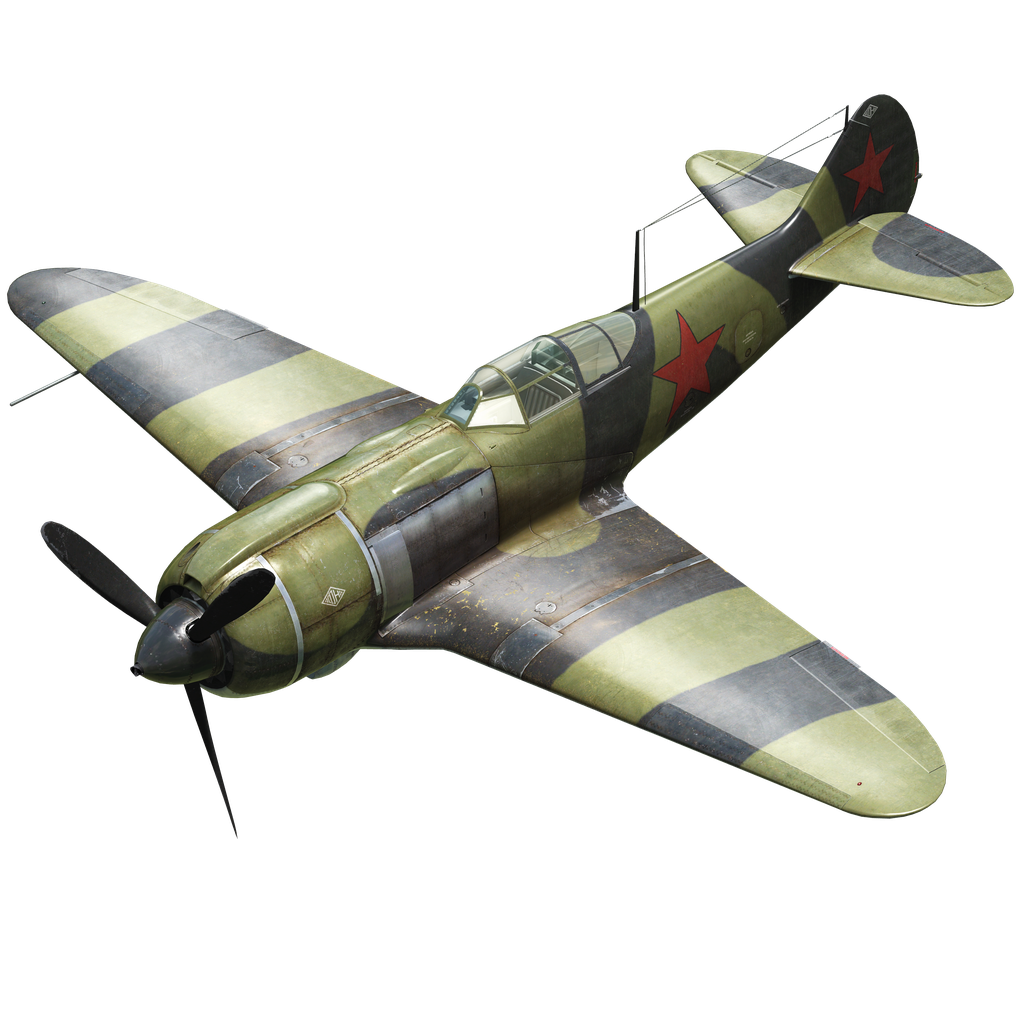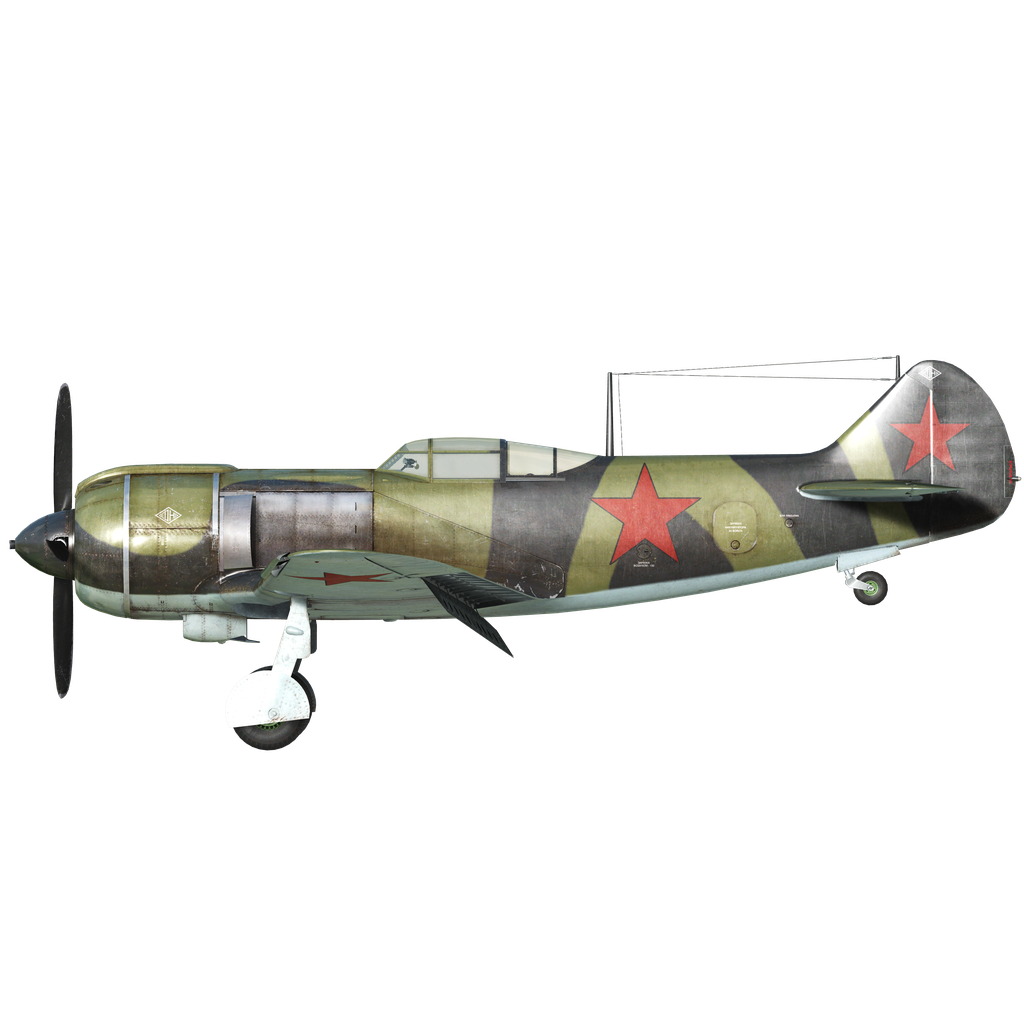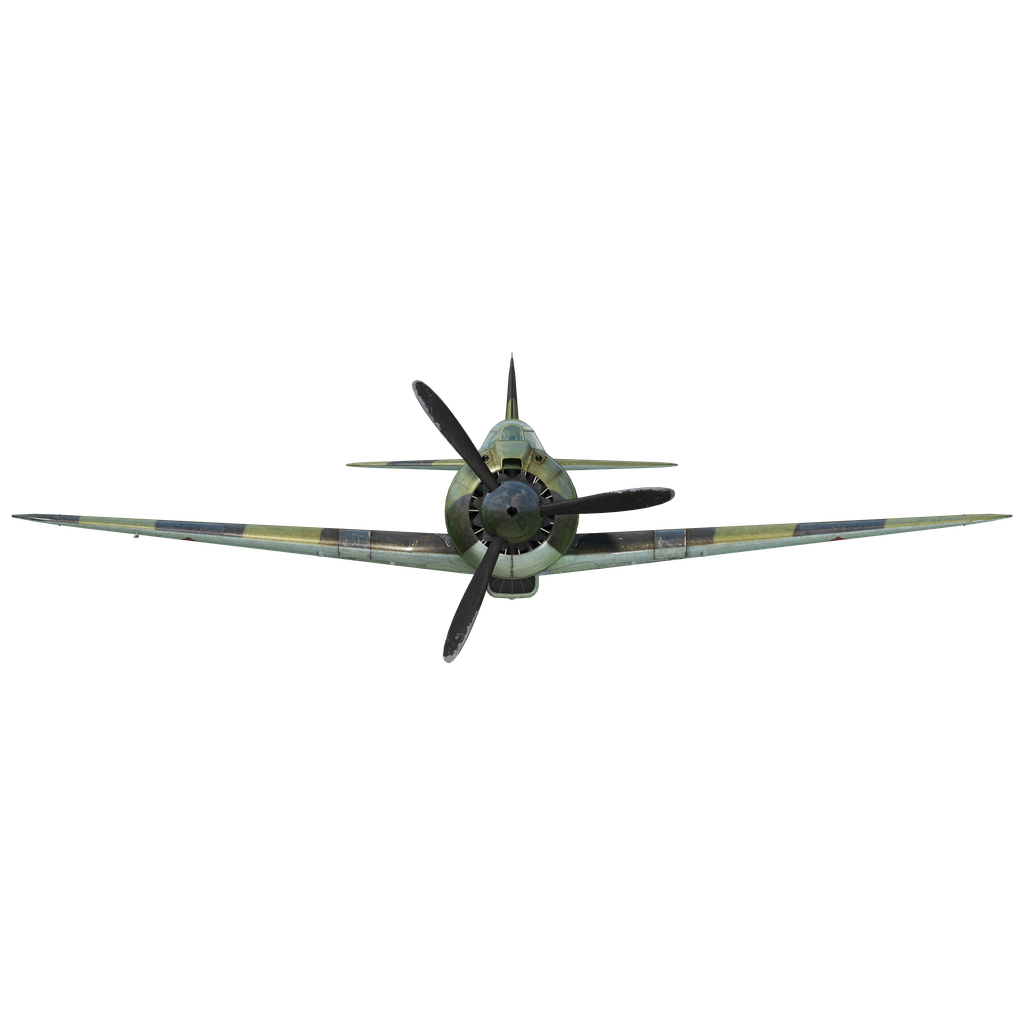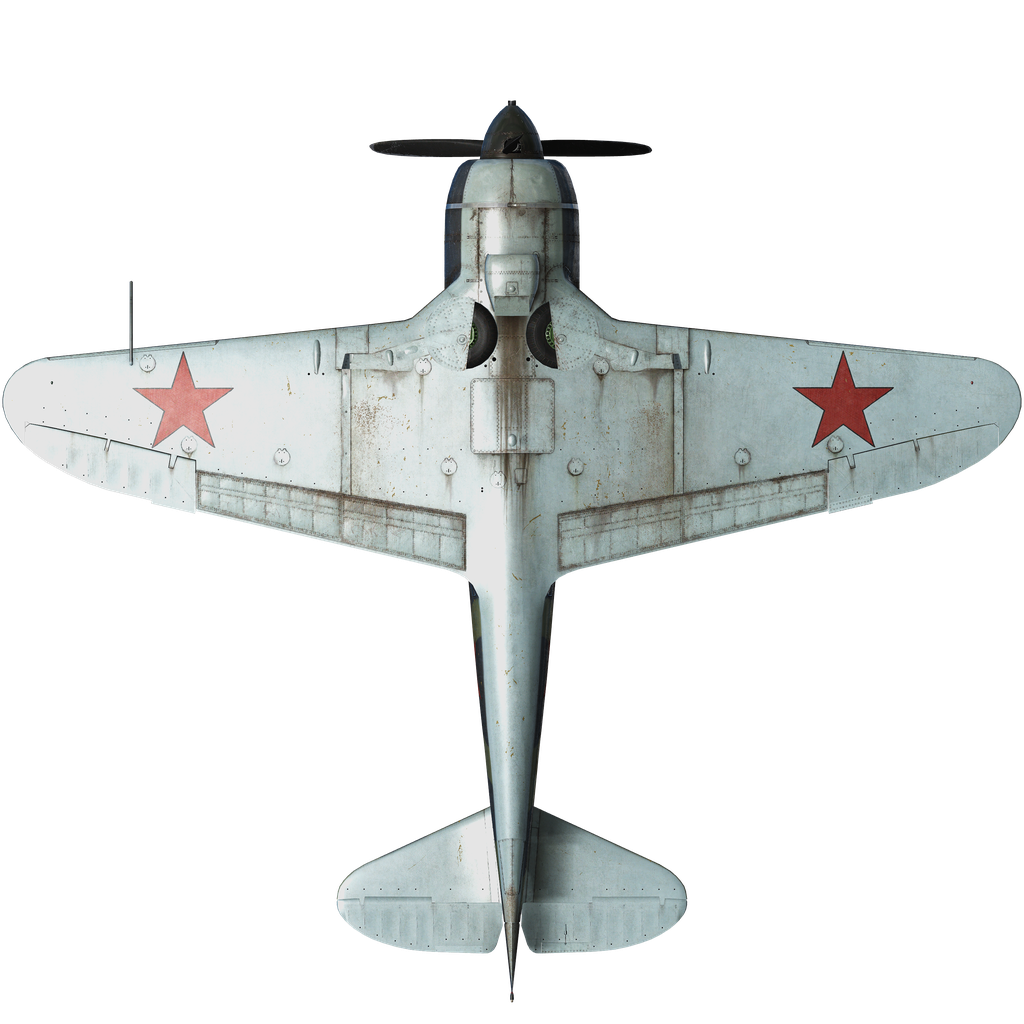The La-5 fighter was introduced in 1942 when a more powerful air-cooled M-82 engine was installed on the LaGG-3 fighter's airframe instead of a water-cooled engine. Even with the new engine, the aircraft was inferior in performance to the main German fighters, so the Shvetsov Design Bureau worked on increasing the engine's power, and in 1943 an improved version with direct fuel injection went into production. The plane with this engine was first flown on March 15, 1943, and immediately went into production. From series to series, the La-5FN was constantly improved.
The second series La-5FN was a single-engine wooden low-wing aircraft. Like the LaGG-3 and previous La-5 modifications, the main structural material of the airframe was pine. Delta wood was used for wing spars and some frames. The wooden parts of the aircraft were glued together. The fuselage consisted of a metal front frame and a wooden monocoque, which was made in one piece with the tail. The pilot's cockpit was closed by a sliding canopy that locked in the open and closed positions - the Series 2 aircraft did not have an emergency canopy release mechanism. Externally, the aircraft differed from the La-5F by a new compressor air intake and new openings for the engine cooling system. The canopy flaps were mounted on a piano hinge in the upper part, next to the supercharger air intake, and there was a heat-resistant panel on the side of the fuselage. In this series, the elevator area was increased, changes were made to the lateral control system, and several other minor changes were made.
The M-82FN engine developed a maximum ground-level power of 1850 hp in boosted mode and 1460 hp at an altitude of 4800 m in nominal mode. The armament remained unchanged and consisted of 2 synchronized 20 mm ShVAK cannons; if necessary, 2 bomb racks for carrying bombs of 50 or 100 kg could be installed under the wing.
Military tests of the first series of new Lavochkin took place in the air battles over the Kursk Bulge. The good speed and excellent maneuverability of the fighter at low altitudes, where most of the battles on the Eastern Front took place, became an unpleasant surprise for the Luftwaffe. According to General A.S. Blagoveshchensky, commander of the 2nd Fighter Air Corps and later head of the Air Force Research Institute, the La-5FN was the best fighter in the Air Force in 1943. However, a carelessly made cockpit canopy, due to which the pilot might not have enough strength to move it in flight in the absence of an emergency release mechanism, as well as some manufacturing defects reduced the combat qualities of the plane.
However, the advantages of the aircraft outweighed its disadvantages and in 1944 3,826 La-5FN fighters were produced. If we take the ratio of enemy planes shot down to the number of losses as a criterion for the effectiveness of a fighter, we can consider the results of the 4th Air Army for 1944 as a reliable example. The La-5 flew 4,161 missions and took part in 270 air battles in which 177 enemy planes were shot down and 27 of their own were lost. The ratio of victories to losses is 6.55:1. For comparison, the same ratio for Yakovlev fighters was 4:1.
The La-5FN was quickly written off after the end of the war — the wooden structure of the aircraft was not suitable for long-term operation in peacetime conditions.
Czechoslovakia was the only country besides the USSR to operate La-5FN fighters. In the Czechoslovak Air Force, the La-5FN received the designation S-95 and continued to be used even after fighters of this type were retired in the USSR.
1. S. Ivanov “La-5” War in the air No. 69 2001
2. “La-5” magazine “Aircraft History” No. 1 2006
3. Materials from the site airwar.ru






